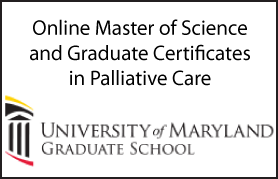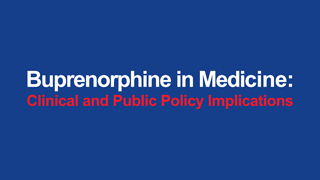The Eastern North Carolina Opioid Prescribers Project: A model continuing medical education workshop
DOI:
https://doi.org/10.5055/jom.2010.0033Keywords:
opioids, prescription medication, substance abuse, substance misuse, drug-seeking patients, continuing medical education, risk reduction, opioid risk managementAbstract
The decision to prescribe opioid medications is complex. Physicians often struggle to balance the risks of medication diversion and abuse with the benefits of pain management. Nationally, more than 40 percent of primary care physicians report difficulty in discussing the possibility of prescription medication abuse with patients and more than 90 percent fail to detect symptoms of substance abuse. Continuing medical education workshops were developed in Eastern North Carolina to mitigate problems with opioid prescriptions. Attendance at these workshops suggests that prescribers are interested in improving opioid prescribing practices and reducing patient risk. Presurvey data indicate that prescribers are knowledgeable about screening tools and they consider patient risk factors for misuse.References
Balinsky M: Drug overdose killed DJ AM, official says. CNN. Available at http://www.cnn.com/2009/SHOWBIZ/Music/09/29/DJ.AM.autopsy/index.html?iref=newssearch. Accessed September 29, 2009.
Bryner J: Overdose epidemic: Not just for celebrities. Live Science. Available at http://www.livescience.com/culture/090729-celeb-overdoses.html. Accessed July 29, 2009.
De Quincey T: Confessions of an English Opium-Eater [1821]. World’s Classics Edition. New York: Oxford University Press, 1998.
Paulozzi LJ, Ryan GW: Opioid analgesics and rates of fatal drug poisoning in the United States. Am J Prev Med. 2006; 31(6): 506-511.
Compton WM, Volkow ND: Major increases in opioid analgesic abuse in the United States: Concerns and strategies. Drug Alcohol Depend. 2006; 81(2): 103-107.
Siegal HA, Carlson RG, Kenne DR, et al.: Probable relationship between opioid abuse and heroin use. Am Fam Physician. 2003; 67(5): 942-945.
North Carolina Department of Justice: North Carolina Crime Statistics. Available at http://sbi2.jus.state.nc.us/crp/public/Default.htm. Accessed October 10, 2009.
Substance Abuse and Mental Health Services Administration, Office of Applied Studies: Results from the 2008 National Survey on Drug Use and Health: National Findings. Available at http://www.oas.samhsa.gov/NSDUH/2k8NSDUH/2k8results.cfm#2.3. Accessed October 23, 2009.
Substance Abuse and Mental Health Services Administration: Emergency room visits climb for misuse of prescription and over-the-counter drugs. Available at http://www.samhsa.gov/newsroom/advisories/0703135521.aspx. Accessed September 23, 2009.
Hall AJ, Logan JE, Toblin RL, et al.: Patterns of abuse among unintentional pharmaceutical overdose fatalities. J Am Med Assoc. 2008; 300(22): 2613-2620.
National Center on Addiction and Substance Abuse at Columbia University: Under the counter: The diversion and abuse of controlled prescription drugs in the US. Available at http://www.casacolumbia.org/absolutenm/articlefiles/380-Under%20the%20Counter%20-%20Diversion.pdf. Accessed September 25, 2009.
Cicero TJ, Dart RC, Inciardi JA, et al.: The development of a comprehensive risk-management program for prescription opioid analgesics: Researched abuse, diversion and addictionrelated surveillance (RADARS¨). Pain Med. 2007; 8(2): 157-170.
Sanford C: An unrelenting epidemic of deaths from prescription drugs in North Carolina. Forum (NC Medical Board). 2008; 13(2): 4-7.
North Carolina Department of Health and Human Resources: Health Profile of North Carolinians: 2007 Update. Available at http://www.schs.state.nc.us/SCHS/pdf/HealthProfile2007.pdf. Accessed October 10, 2009.
Sanford C: Deaths from unintentional drug overdoses in North Carolina, 1997-2001: A DHHS investigation info unintentional poisoning-related deaths. Available at http://injuryfreenc.ncdhhs.gov/About/unintentionalpoisoningsReport.pdf. Accessed September 7, 2009.
North Carolina Mental Health Developmental Disabilities and Substance Abuse Services: North Carolina controlled substances reporting system. Available at http://www.dhhs.state.nc.us/MHDDSAS/controlledsubstance/index.htm. Accessed September 7, 2009.
Madras B: Charge to working groups. In National Leadership Conference on Medical Education in Substance Abuse. Washington, DC: Office of National Drug Control Policy, 2006: 62.
Cohen SP, Raja SN: The middle way: A practical approach to prescribing opioids for chronic pain. Nat Clin Pract Neurol. 2006; 2(11): 580-581.
Dahl JL: Working with regulators to improve the standard of care in pain management: The U.S. experience. J Pain Symptom Manage. 2002; 24(2): 136-147.
Joranson DE, Gilson AM, Dahl JL, et al.: Pain management, controlled substances, and state medical board policy: A decade of change. J Pain Symptom Manage. 2002; 23(2): 138-147.
McEwan S: Substance abuse screening and brief intervention in primary care. N C Med J. 2009; 70(1): 38-42.
Savage SR, Kirsh KL, Passik SD: Challenges in using opioids to treat pain in persons with substance use disorders. Addict Sci Clin Pract. 2008; 4(2): 4-25.
Joranson DE, Carrow GM, Ryan KM, et al.: Pain management and prescription monitoring. J Pain Symptom Manage. 2002; 23(3): 231-238.
Gilson AM, Maurer MA, Joranson DE: State medical board members’ beliefs about pain, addiction, and diversion and abuse: A changing regulatory environment. J Pain. 2007; 8(9): 682-691.
Wentz DK, Gannon MI, Osteen AM: Continuing medical education. JAMA. 1990; 264(7): 836-840.
McKenna M, Richart S, Tyler S: Impact of educational interventions on physician performance and patient outcomes. CE Meas J Outcomes Meas Continuing Healthcare Educ. 2008; 2(1): 2-6.
Peppin JF: The use of methadone “as needed,” is it justified? J Opioid Manage. 2009; 5(1): 7-9.
Westley H: Center for substance abuse treatment substance abuse and mental health services administration: Initiative on prescription drug abuse. In National Leadership Conference on Medical Education in Substance Abuse. Washington, DC: Office of National Drug Control Policy, 2006: 55-58.
Center for Substance Abuse Treatment, Substance Abuse and Mental Health Services Administration: Clinical Challenge: Prescribing Controlled Drugs. Beaufort, NC: Lumina Wellness, Inc., 2008.
Office of National Drug Control Policy: Drug policy information clearinghouse, state of North Carolina: Profiles of drug indicators. Available at http://www.whitehousedrugpolicy.gov/statelocal/nc/nc.pdf. Accessed August 21, 2009.
Compton WM, Volkow ND: Abuse of prescription drugs and the risk of addiction. Drug Alcohol Depend. 2006; 83 (Suppl. 1): S4-S7.
Winfield JB: Pain and arthritis. N C Med J. 2007; 68(6): 444-446.
Katz N: Teaching appropriate prescribing. In National Leadership Conference on Medical Education in Substance Abuse. Washington, DC: Office of National Drug Control Policy, 2006: 31-34.
Published
How to Cite
Issue
Section
License
Copyright 2005-2024, Weston Medical Publishing, LLC
All Rights Reserved












